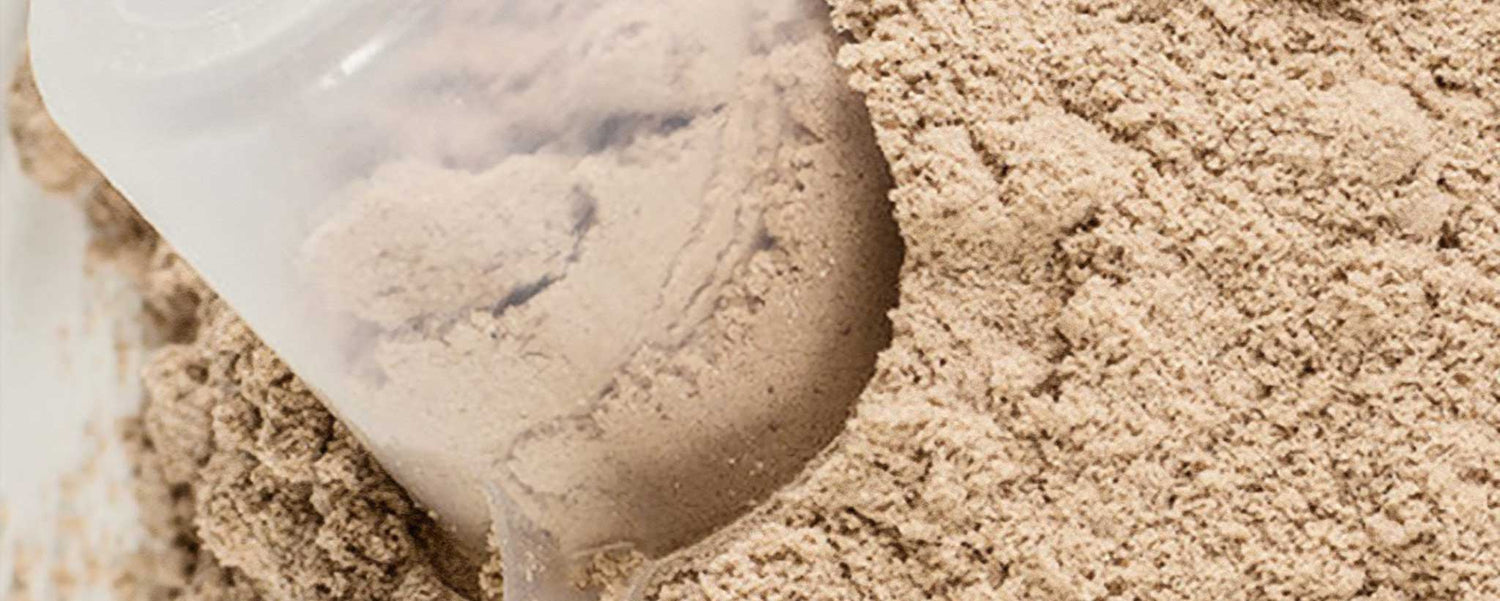Whether you are a bodybuilding champion, lactating mom, growing teenager, or sedentary executive, you should not ignore your need for protein. Is hemp better than soy plant-based protein supplements?
Best Powdered Protein Supplement
Consuming protein immediately after a workout helps build muscle. Whether you are a bodybuilding champion, lactating mom, growing teenager, or sedentary executive, you should not ignore your body’s need for protein. More than your bench-pressing achievements are at stake.
Mental health can suffer from a lack of protein intake. Though I have been a vegetarian for years, when my protein consumption is low, I crave meat. This year, I am making adequate protein a priority to keep those cravings at bay.
Animal-based proteins are complete proteins, meaning they contain all the essential amino acids your body needs to function properly. Fatigue, edema, fatty liver, weak hair and nails, and more are symptoms of protein deficiency. However, consuming more than 35% of your protein from one source—even meat—can result in caloric imbalance with other negative side effects.
Has your doctor advised you to cut back on red meat? Maybe you realize that your cholesterol has increased in proportion to the number of burgers you have been eating. Whatever the reason, you might now be considering a powdered protein supplement.
That market aisle can be daunting. Let’s try to simplify the decision-making process by comparing powders from four primary sources. Before making significant diet changes, it is wise to consult a physician. In one example, those with kidney problems may need to reduce their protein intake to prevent serious reactions.

Protein supplements are popular among bodybuilders, vegetarians, and vegans.
From Where Does It Come?
Whey protein isolate is a mixture of globular proteins isolated from whey, a liquid cheese production byproduct. It has been used as a protein supplement by bodybuilders practically since Little Miss Muffet Sat on a Tuffet. As an animal product, it is shunned by vegans and may be a source of bloating among people with milk sensitivities. On the upside, it is quickly digested for faster synthesis.
As an animal product, whey protein is shunned by vegans and those with milk sensitivities, though it is quickly digested.
Casein is the most abundant protein in milk. Being marginally insoluble on its own, it forms structures called micelles that increase solubility when hydrated. During the processing of milk, which usually involves heat or acid, the casein peptides and micelle structure become disturbed or denatured to form simpler structures. As a result, a gelatinous material is formed. This is the basis for why casein has a slower rate of digestion and accounts for its time-released amino acids.
⚠️ Warning: Some manufacturers have amino spiking accusations. Adjusting the nitrogen levels of protein can actually cause it to pass with an adequate amount per serving. They do this by adding very cheap bulk amino acid powders. The only way to determine if your protein is legitimate is with a mass spectrometer test.
The two dairy products, casein and whey, are sometimes combined for complementary effects. Whey protein results in a rapid increase in blood amino acids and protein synthesis, but is short-lived. Casein results in a prolonged increase in blood amino acids with a 34% reduction in protein breakdown.
Soy protein isolate (SPI) is a popular alternative made from highly processed soybeans to “isolate” the protein byproduct. Like meat, whole soybeans are considered a complete protein, containing all of the essential amino acids we have to get from food because they cannot be made by the body. SPI is an incomplete protein. The benefits get hazy as manufacturers describe whole soybean benefits while selling a byproduct.
Soy protein isolate manufacturers describe whole soybean benefits while selling a byproduct.
Many people have allergies or intolerances that make it hard to digest soy. Even if you’re not one of them, SPI may make your stomach rumble, says Lauren Slayton, MS, RD. This is because SPI has a higher concentration of trypsin inhibitors, chemicals that reduce available trypsin—an enzyme that helps digest protein—in the body. If you are not digesting protein properly, you are losing the benefit from it.
⚠️ Warning: Soy and many nut proteins are incompatible with low-oxalate diets.
Soy has also come under fire for mimicking estrogen in women with possible cancer concerns and reducing testosterone in men. Lab animals and humans metabolize soy differently. Read the Huffington Post article, ‘5 Myths About Soy You Probably Still Believe.’
Hemp contains a tenth of the THC found in marijuana, along with other naturally occurring chemicals that neutralize psychotic effects.
Hemp protein is an industrial byproduct from hempseed, as the balanced macronutrient seeds have their oil extracted into hempseed oil. The remaining seed meal, which is high in protein relative to the seeds, is then processed into hemp protein supplements. As the name implies, it comes from a neutered Cannabis sativa plant.
A hemp plant is grown more for its reed-like stalk than THC-rich buds or leaves. It not only looks different but also contains a tenth of the THC found in marijuana, along with other naturally occurring chemicals that neutralize psychotic effects. (THC can trigger a relapse in schizophrenic symptoms.) In other words, you’d have to eat perhaps a full pound of hemp protein powder within a very short time to feel a buzz.
Hemp is arguably better than soy plant-based protein supplement, which especially appeals to vegans. The hemp seed is the richest known source of polyunsaturated fats, containing a perfect 3:1 ratio of omega-6 linoleic acid and omega-3 linoleic acid. Its protein powder has 9g of fiber per serving, compared to whey's meager ≤1g. Using non-GMO Organic Shelled Hempseed or Hemp Oil is an option to consider.
In addition to protein, the seeds of hemp contain the following nutritional compounds:
- Vitamin E (90mg/100g)
- Thiamin (0.4mg/100g)
- Riboflavin (0.1mg/100g)
- Phosphorus (1160mg/100g)
- Potassium (859mg/100g)
- Magnesium (483mg/100g)
- Calcium (145mg/100g)
- Iron (14mg/100g)
- Sodium (12mg/100g)
- Manganese and Zinc (7mg/100g)
- Copper (2mg/100g)
The four listed powders are popular but do not represent a comprehensive list. Pea protein and protein or nutrients from other vegetables are used in plant-based protein powders.
How Do They Taste?
Neither protein powder dissolves well when manually stirred into liquid. They need to be mechanically blended with liquid. In water, they each taste bland. Hemp has a “nutty” characteristic and will likely leave more residue in the bottom of your glass. Manufacturers add flavors and fortify their powder with vitamins for distinction. Whey protein may contain non-fat milk. Natural vanilla and chocolate are popular flavors. Chai tea-flavored powders are also available on well-stocked nutrition store aisles.
Overprocessing to isolate a protein can inhibit symbiotic relationships with other naturally occurring nutrients.
The relative insolubility of hemp lends itself to use within thicker smoothies, soups, sauces, pancakes, waffles, and hot cereals. If you plan to blend smoothies with fruit or vegetables, an unflavored powder is more versatile than chocolate. (Chocolate hemp tastes less like chocolate than carob.) Here is a recipe Step Shacklford recommends for use with the Magic Bullet:
- 1/2 banana
- 1-inch slice frozen avocado
- 2 frozen strawberries
- 1 Tbsp wheat germ
- 3 Tbsp chocolate hemp protein powder
- 1/4 tsp vitamin C powder
- 1/2 Tbsp grated ginger
- 3/4 to 1 cup almond milk (depending on desired creaminess)
To stay A Bit More Healthy, many nutritionists advise obtaining protein—and all essential nutrients—from minimally refined sources or whole foods. Each powder is a byproduct; manufacturers strive to sell every fraction of their livestock and crops. Over-processing to isolate a protein can inhibit symbiotic relationships with other naturally occurring nutrients. The adventuresome can make their own.
Consult your doctor, healthcare professional, or nutritionist before using hemp seeds to aid the management of a medical condition or supplement a part of your diet.
To support the writing of useful articles about nutrition, ClinicalPosters sells human anatomy charts, scientific posters, and other products online. You may sponsor specific articles, become a ClinicalNovellas Member, or remit a small donation.
ClinicalPosters sells human anatomy charts, scientific posters, and other products online to offset expense of the writing useful articles about nutrition. Slide extra posters into DeuPair Frames without removing from the wall.
Show your support by donating, shopping for ClinicalPins, becoming a ClinicalNovellas Member, or leaving an encouraging comment to keep the research going.
To support the writing of useful articles about nutrition, ClinicalPosters sells human anatomy charts, scientific posters, and other products online. You may sponsor specific articles or remit a small donation.
ClinicalPosters sells human anatomy charts, scientific posters, and other products online to offset expense of the writing useful articles about nutrition. Slide extra posters into DeuPair Frames without removing from the wall.
ClinicalPosters sells human anatomy charts, scientific posters, and other products online. You may remit a small donation or become a ClinicalNovellas Member.
You can support the writing of useful articles about nutrition by sponsoring specific articles, becoming a ClinicalNovellas Member, or remitting a small donation. Visible content is optimized for device size.









